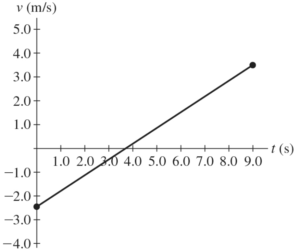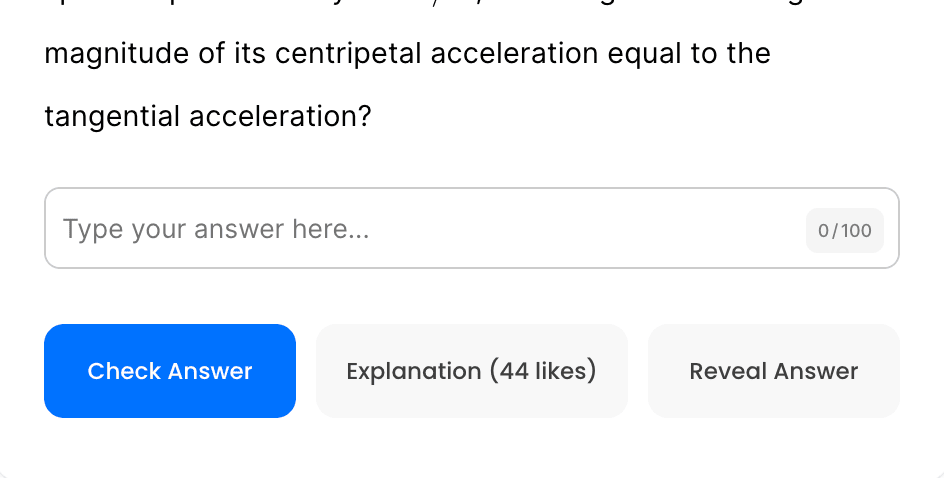A car accelerates from \( 0 \) to \( 25 \) \( \text{m/s} \) in \( 5 \) \( \text{s} \). If the car’s tires have a diameter of \( 70 \) \( \text{cm} \), how many revolutions does a tire make while accelerating?

The motion of a particle is described in the velocity vs. time graph shown above. Over the nine-second interval shown, we can say that the speed of the particle…
A solid sphere \( \left( I = \frac{2}{5}MR^2 \right) \) and a solid cylinder \( \left( I = \frac{1}{2}MR^2 \right) \), both uniform and of the same mass and radius, roll without slipping at the same forward speed. It is correct to say that the total kinetic energy of the solid sphere is
For linear motion the term “inertia” refers to the same physical concept of
A stone is thrown vertically upwards with a speed of \( 20.0 \) \( \text{m/s} \). How fast is it moving when it reaches a height of \( 12.0 \) \( \text{m} \)?
An object of unknown mass is acted upon by multiple forces:
The coefficients of friction are \(\mu_s = 0.6\) and \(\mu_k = 0.2\). Starting from rest, the object travels \(10 \, \text{m}\) in \(4.5 \, \text{s}\). What is the mass of the unknown object?
A person stands on a scale in an elevator. His apparent weight will be the greatest when the elevator
A rubber ball with a mass of 0.25 kg and a speed of 19.0 m/s collides perpendicularly with a wall and bounces off with a speed of 21 m/s in the opposite direction. What is the magnitude of the impulse acting on the rubber ball?
Which of the following must be true for an object at translational equilibrium?
You stand at the edge of a vertical cliff and throws a stone vertically upwards. The stone leaves your hand with a speed v = 8.0 m/s. The time between the stone leaving your hand and hitting the sea is 3.0 s. Assume air resistance is negligible. Calculate:
A 2.0 kg wood box slides down a vertical wood wall while you push on it at a 45 ° angle. The coefficient of kinetic friction of wood µk = 0.200. What magnitude of force should you apply to cause the box to slide down at a constant speed?

Four identical lead balls with large mass are connected by rigid but very light rods in the square configuration shown in the preceding figure. The balls are rotated about the three labeled axes. Which of the following correctly ranks the rotational inertia \(I\) of the balls about each axis?
By continuing you (1) agree to our Terms of Use and Terms of Sale and (2) consent to sharing your IP and browser information used by this site’s security protocols as outlined in our Privacy Policy.
Quick Start Guide
AP physics 1, AP C, honors and advanced physics students.
Quickly filter questions by units and more.


Here’s guide to using 5 UBQ filters.
GQ = general question, MCQ = multiple choice, FRQ = free response.


Click the check or bookmark button.
Now you’ll be able to see completed or bookmarked questions at a glance!
Answer keys, personalized for you.

Phy will be responsible for grading your FRQs and GQs.
No more copy and pasting. Just solve and snap.
Questions for Mastery

By continuing you agree to nerd-notes.com Terms of Service, Privacy Policy, and our usage of user data.